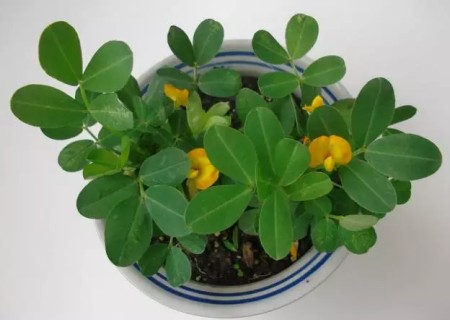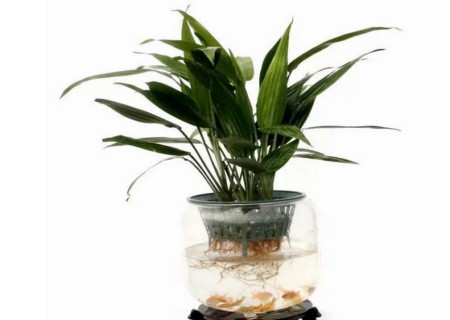How to grow potted peanuts
In the plant kingdom, peanuts are unique plants that blossom on the ground and bear fruit underground, and they can only bear fruit in a dark soil environment, so they are also called "falling peanuts". Nowadays, more and more people like to grow fruits and vegetables on their balcony or in their yard. Today I will teach you how to grow peanuts on the balcony.

First of all, we have to understand the sowing time of peanuts. Generally speaking, peanuts can be planted after Grain Rain. Here we can remember an agricultural proverb: "after Grain Rain grows peanuts, Shashan peanut soil mountain grain." it probably means that you can start growing peanuts after Grain Rain, peanuts in sandy soil.
We know the time of sowing and the soil for potted peanuts. Don't think the nutritious soil is good. For peanuts, sandy soil is the best. In addition, we need to prepare a slightly larger and deeper basin, because we need to leave enough room for peanuts to grow, and the edge of the basin is not too high to ensure that the sun can reach the roots.
Let's take a look at the specific methods of potted peanut planting:
1. Seed treatment, because it is a potted plant, we need less seeds. We can choose 1-4 healthy seeds, then soak them in water for one night, and then sow them the next day.
2, sowing attached soil 1-2 cm can be, after sowing, it is recommended to attach a film, which helps to sprout early, then the soil must remain moist, do not expose in the sun, otherwise it will lead to incomplete root development transpiration is too strong and death, after 1-7 days or so can sprout.
3. The peanut blossoms, the important thing is in the fourth step.
4. Peanuts blossom on the ground and bear fruit underground. After the flowers have withered, several roots have to be inserted into the soil where they originally bloomed. In fact, they are going to bear fruit in the soil, and then we can wait for its fruit to ripen. So, as we said earlier, one is that the basin is slightly larger, and the other is that the edge of the basin is a little shallower.
With the coming of autumn, we can harvest peanuts.
Here to supplement the daily maintenance, peanuts give adequate light, in addition, do not supply too much water, to keep dry and wet, if the soil is too wet for a long time, there may be more "fat" peanuts without peanuts, all shells. Beautiful potted plants that can be watched and eaten, try it as soon as possible!
Peanut is a kind of nut which is rich in yield and widely eaten in our country, also known as peanut, evergreen fruit and so on. it is an annual herb of leguminose. at present, many white-collar workers increasingly like to keep a small potted plant on their desks. and peanut potted plants are also becoming popular, because peanut potted plants are simple and good-looking. Next, let's follow the editor who makes peat nutritious soil in Changchun to take a look at how to grow potted peanuts.
1. Seed treatment
Potted plants need less seeds. You can choose 1-4 healthy seeds, soak them in water for one night, and sow them the next day. Sowing the attached soil of 1 cm to 2 cm, it is recommended to attach a layer of film after sowing, which helps to germinate early and can germinate directly in light, about 1-7 days later.
2. Seedling emergence management
From sowing to 50% of the seedlings were unearthed and the first true leaf was unearthed as the stage of germination and emergence. At this time, the growth characteristics of peanuts were mainly rooting, branching, long leaves and other vegetative growth. After seed germination, seedlings should be checked immediately to find missing seedlings. Timely replanting or seedling replenishment should be carried out according to the lack of seedlings, and attention should be paid to the prevention and control of diseases and insect pests.
3. Seedling stage management
The seedling stage of peanut is generally from 20 to 35 days. During this period, the growth is characterized by vegetative growth, flower buds begin to differentiate and root nodules begin to form. Adequate water and fertilizer, especially nitrogen fertilizer, should be ensured at the seedling stage to promote root nodule formation and flower bud differentiation. However, we should not fertilize too much, lest the branches and leaves grow too much, resulting in insufficient fruit. At the same time, we should do a good job in weeding, prevention and control of root rot and other diseases. Cultivate strong seedlings, promote the first and second pairs of lateral branches to grow early and quickly, and strive for more effective flower buds.
4. Florescence management
The lower needle period of peanut flowering is 15-35 days, which varies greatly according to planting season and variety. the lower needle period of spring-sowing peanut is 25-35 days, and that of summer sowing is 15-20 days. The growth of this period is characterized by the combination of vegetative growth and reproductive growth, the formation of a large number of root nodules and the enhancement of nitrogen fixation ability. During the needling period, it is necessary to ensure sufficient light, fertilizer and water for peanuts to ensure that the fruit needles are buried in the soil. During this period, attention should be paid to the control of rotten and dead seedlings, as well as the prevention of pests. Cultivate soil to welcome needles, increase the application of phosphorus, potassium and calcium fertilizer, and improve the ability of nitrogen fixation.
5. Pod setting management
The podding period of peanut is generally 20-40 days, spring sowing is 30-40 days, and summer sowing is 20-30 days. The growth characteristic of this period is that a large number of fruit needles enter the soil to form young or blighted fruit, the vegetative growth reaches the peak, and the water and fertilizer consumption reaches the maximum. At this time, the vegetative growth of peanuts reached its peak, the temperature was high and the light was sufficient, so it was necessary to ensure sufficient water. Pay attention to the control of dead seedlings and pests. Extra-root fertilization can prevent premature senescence and promote pod development.
6. Fruit harvest
The full fruit period of spring sowing peanut is 40-50 days, and that of summer sowing is 30-40 days. During this period, vegetative growth is gradually declining, reproductive growth is dominant, and root nodules stop nitrogen fixation. At this time, extra-root fertilization can be applied to prolong the functional period of leaves, improve the full fruit rate, and pay attention to timely harvest to prevent fruit germination.
Time: 2019-05-24 Click:
- Prev

How to plant peanuts in pots (how to grow peanuts in small pots)
Now, more and more people begin to like to grow potted vegetables or fruits on the balcony or outdoors, edifying temperament on the one hand and being able to appreciate the joy of harvest on the other. Growing peanuts on the balcony is actually very simple, easy to operate and easy to use. You might as well try it at home, or give your child a few seeds and let your child plant one.
- Next

Hydroponic Culture method of Cymbidium mongolica
The orchid is tall and straight in shape, bright and green in color, graceful, elegant and graceful; at the same time, it is strong, adaptable and extremely shady, so it is an excellent shade-loving foliage plant for indoor greening and decoration. It is suitable for home and office layout. Can be watched alone; can also be arranged with other flowering plants
Related
- Fuxing push coffee new agricultural production and marketing class: lack of small-scale processing plants
- Jujube rice field leisure farm deep ploughing Yilan for five years to create a space for organic food and play
- Nongyu Farm-A trial of organic papaya for brave women with advanced technology
- Four points for attention in the prevention and control of diseases and insect pests of edible fungi
- How to add nutrient solution to Edible Fungi
- Is there any good way to control edible fungus mites?
- Open Inoculation Technology of Edible Fungi
- Is there any clever way to use fertilizer for edible fungus in winter?
- What agents are used to kill the pathogens of edible fungi in the mushroom shed?
- Rapid drying of Edible Fungi

